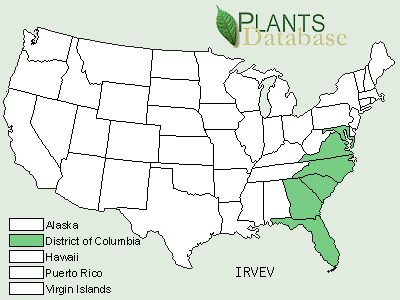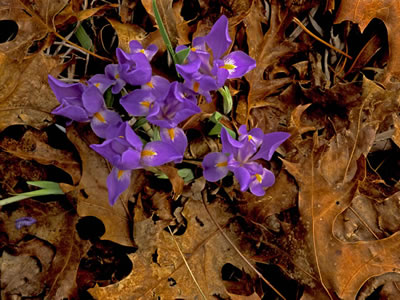Our Native Irises: Blue Flag Irises
Iris verna var. verna: Coastal Plain Dwarf Violet Iris
The coastal plain dwarf violet iris occurs in the coastal plain and piedmont of the southeastern states; Maryland south to Florida.
Iris verna var. verna is ligth to deep blue to violet or rarely a white spring wildflower with a golden yellow signal on the spreading sepals. The petals are ascending. The one- to two-flowered inflorescence appears before the leaves emerge from the ground. The narrow, 3 to 8 mm, stiff, dark green leaves arise from shallowly rooted creeping rhizomes, 5 to 15 cm between offshoots forming loose colonies.
Iris verna var. verna is commonly found growing in nutrient poor acid soils, in semi-shaded mesic to dry woodlands.
For More Information
Iris verna var. smalliana: Upland Dwarf Violet Iris
The upland dwarf violet iris occurs in the eastern states from New York south to Georgia, west to east central Mississippi, with disjunct populations in the Ouachita mountains of Arkansas and Ozarks of Missouri.
Iris verna var. smalliana is deep blue to violet or rarely a white spring wildflower with a golden yellow signal on the spreading sepals. The petals are ascending. The one- to two-flowered inflorescence appears before the leaves emerge from the ground. The narrow 5 to 13 mm wide, stiff dark green leaves arise from shallowly rooted creeping rhizomes, 1 to 3 cm between offshoots forming dense clumps.
Iris verna var. smalliana is commonly found growing in nutrient poor acid soils, in semi-shaded mesic to dry woodland slopes.





